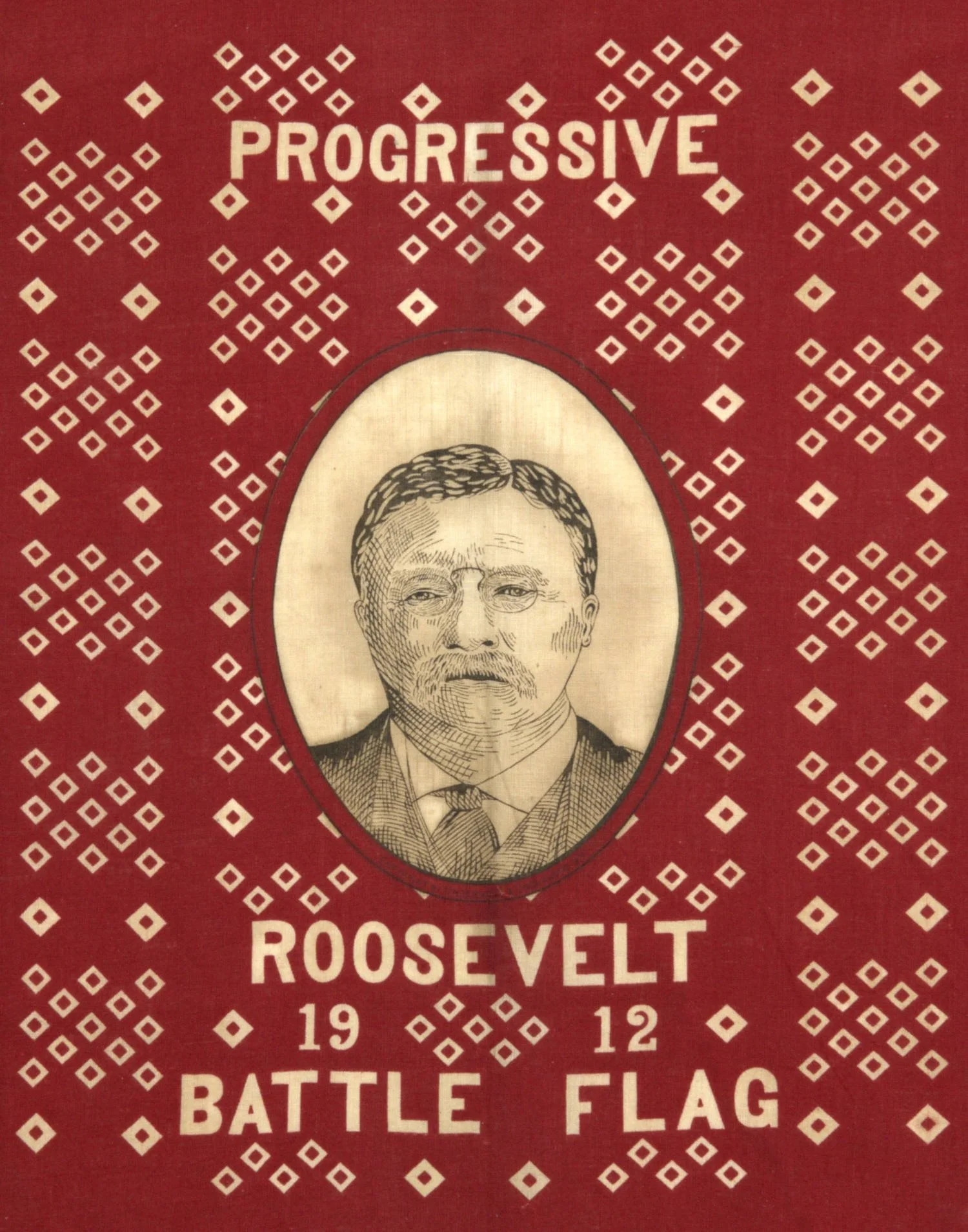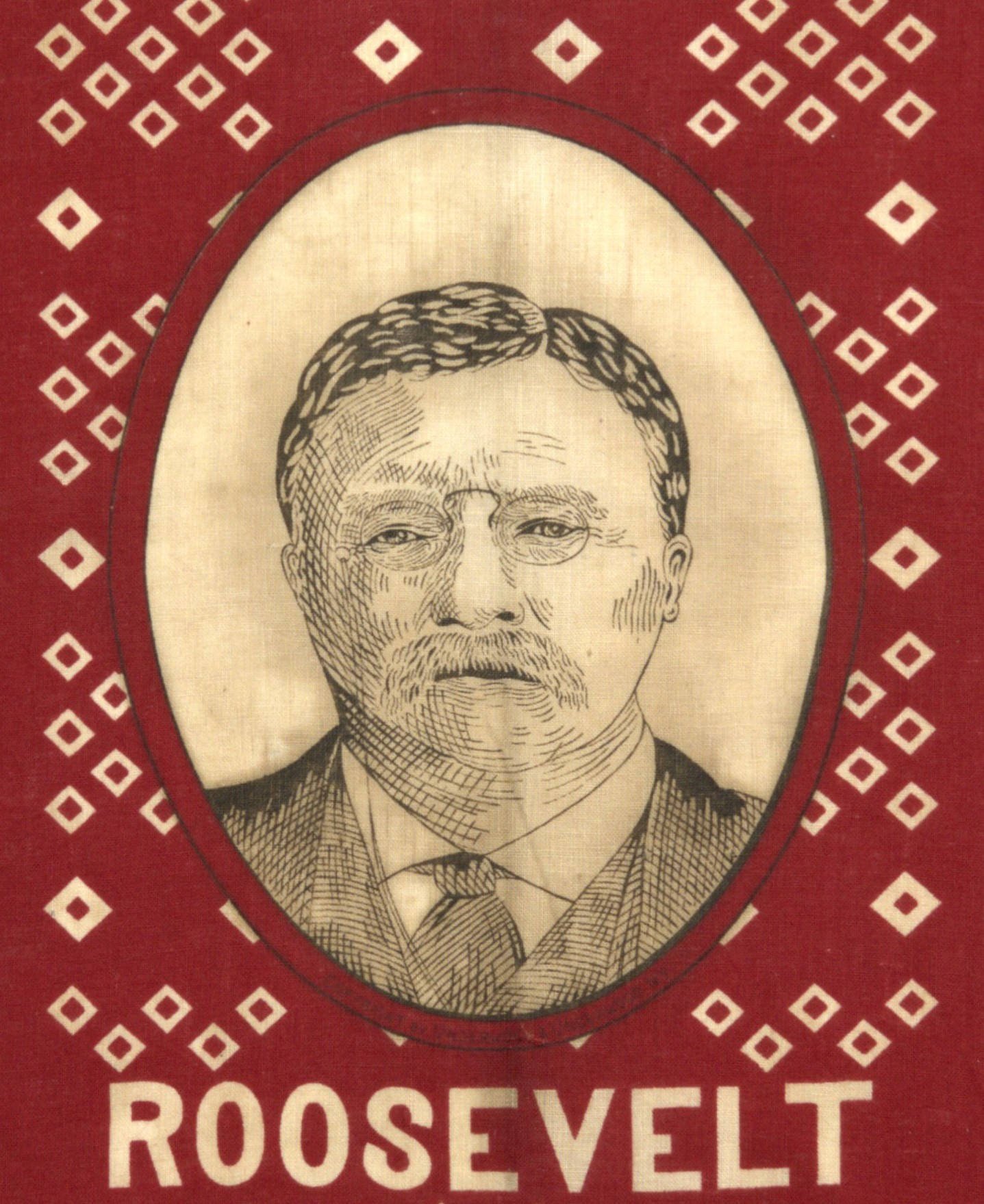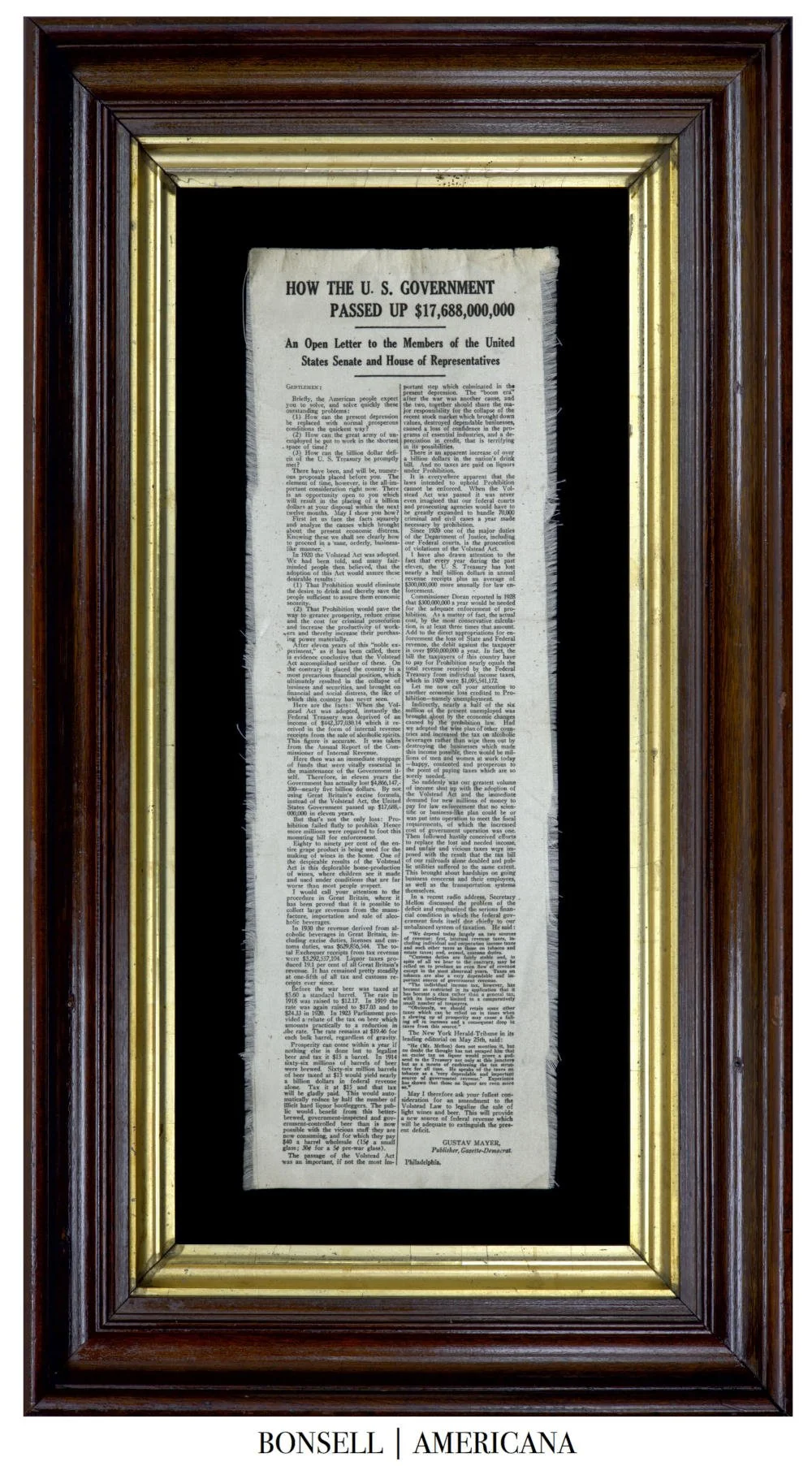Teddy Roosevelt Progressive Battle Flag Bandanna | A Campaign Textile Celebrating the Vision of the Bull Moose Party | Circa 1912
Teddy Roosevelt Progressive Battle Flag Bandanna | A Campaign Textile Celebrating the Vision of the Bull Moose Party | Circa 1912
Frame Size (H x L): 33” x 35”
Bandanna Size (H x L): 22” x 24”
The offered bandanna, produced for the 1912 presidential campaign of Theodore Roosevelt, is a striking example of early 20th century political textile art. Printed on cotton, it features a central oval portrait of Roosevelt surrounded by text reading “Copyright by Underwood & Underwood, NY,” indicating that the image rights were held by Underwood & Underwood, a prominent publisher known for its stereo views and news photography.
The words “Progressive” and “Roosevelt 1912 Battle Flag” are printed around the portrait, emphasizing Roosevelt's connection to the Progressive Party, which he represented in his third bid for the presidency. This visual emphasis aligns with Roosevelt's reformist ideals and his support for greater governmental regulation and social welfare.
The design of the bandanna incorporates traditional Western motifs, consisting of a geometric field of small diamond shapes, bordered by two sets of striped lines. This pattern reflects the rugged, populist image Roosevelt cultivated throughout his career, often associating himself with the American West and outdoor pursuits. The red background of the bandanna, typical for bandannas of this style, reinforces this association, as red kerchiefs were a staple of Roosevelt’s attire during his various expeditions and public appearances.
This campaign piece is linked to Roosevelt’s "Bull Moose" campaign of 1912, in which he ran as a Progressive Party candidate after a split with the Republican Party. His campaign promoted a "New Nationalism" that advocated for expanded government intervention to ensure social justice, regulate corporations, and protect labor rights. Roosevelt’s choice to run under the Progressive banner was both a continuation of his earlier reformist policies and a response to what he saw as the failure of his successor, William Howard Taft, to carry forward his vision.
The 1912 presidential campaign, in which Roosevelt ran as the Progressive Party candidate, marked one of the most significant splits in American political history. After serving two terms as president, Roosevelt had promised not to seek a third. However, he became increasingly disillusioned with Taft’s conservative policies, particularly his approach to trust regulation and his failure to advance Roosevelt’s reformist vision, which led Roosevelt back into the political arena. When he failed to secure the Republican nomination, Roosevelt and his supporters formed the Progressive Party. Known as the “Bull Moose Party” after Roosevelt declared himself “fit as a bull moose,” the party became a symbol of his resilience and determination to enact social and economic reforms.
The Progressive Party’s platform, which Roosevelt called “New Nationalism,” advocated for an expanded federal government to oversee business practices, protect workers, and promote social welfare programs. Roosevelt proposed progressive labor laws, women’s suffrage, environmental conservation, and stricter corporate regulation—positions that set him apart from both Taft and the Democratic candidate, Woodrow Wilson. Despite his popularity, the Bull Moose Party ultimately split the Republican vote, enabling Wilson to secure a decisive victory. Roosevelt received 88 electoral votes to Wilson’s 435, while Taft carried only 8. Although the Progressive Party did not become a lasting political force, it influenced future reform movements, particularly in the New Deal era.
The “D&C NY” marking in the lower left corner identifies the unknown manufacturer of the bandanna. While the company remains unidentified, the New York location is consistent with the city’s status as a hub for textile and campaign material production during this era. New York-based manufacturers were often involved in producing political memorabilia, reflecting the importance of campaign textiles in American political culture.
Underwood & Underwood, credited with the portrait’s copyright, was founded in Kansas in 1881 before relocating to New York City in 1887. Known primarily as the largest publisher of stereoscopic views in the world, the company expanded its scope to include press photography and other visual media. By the early 20th century, Underwood & Underwood had established itself as a leader in news bureau photography, and its involvement with this bandanna underscores the intersection of political imagery and emerging photographic technologies.
Political bandannas like this one were widely popular in the late 19th and early 20th centuries, used as both campaign tools and patriotic symbols. They were worn by supporters, displayed in store windows, waved at rallies, and often kept as mementos of political events. The Roosevelt “Battle Flag” bandanna captures the fervor and ideals of the Progressive movement, while also showcasing the historical importance of campaign textiles as a means of political expression and propaganda.
Conservation Process: This bandanna was hand sewn to cotton fabric, and both were hand sewn to a mounting board. To prevent the black dye in the cotton fabric from seeping into the bandanna, it was first washed in a standard wash and then in a dye setting wash. The bandanna is positioned behind Optium Museum Acrylic.
Frame: This offering is in our X-Large Distressed Black and Silver Frame.
Condition Report: The bandanna is in excellent condition overall, with clear and vibrant details. There is some slight discoloration within and around the portrait of Teddy Roosevelt.
Collectability Level: The Good – Perfect for Beginning Collectors and Gifts
Date of Origin: 1912









